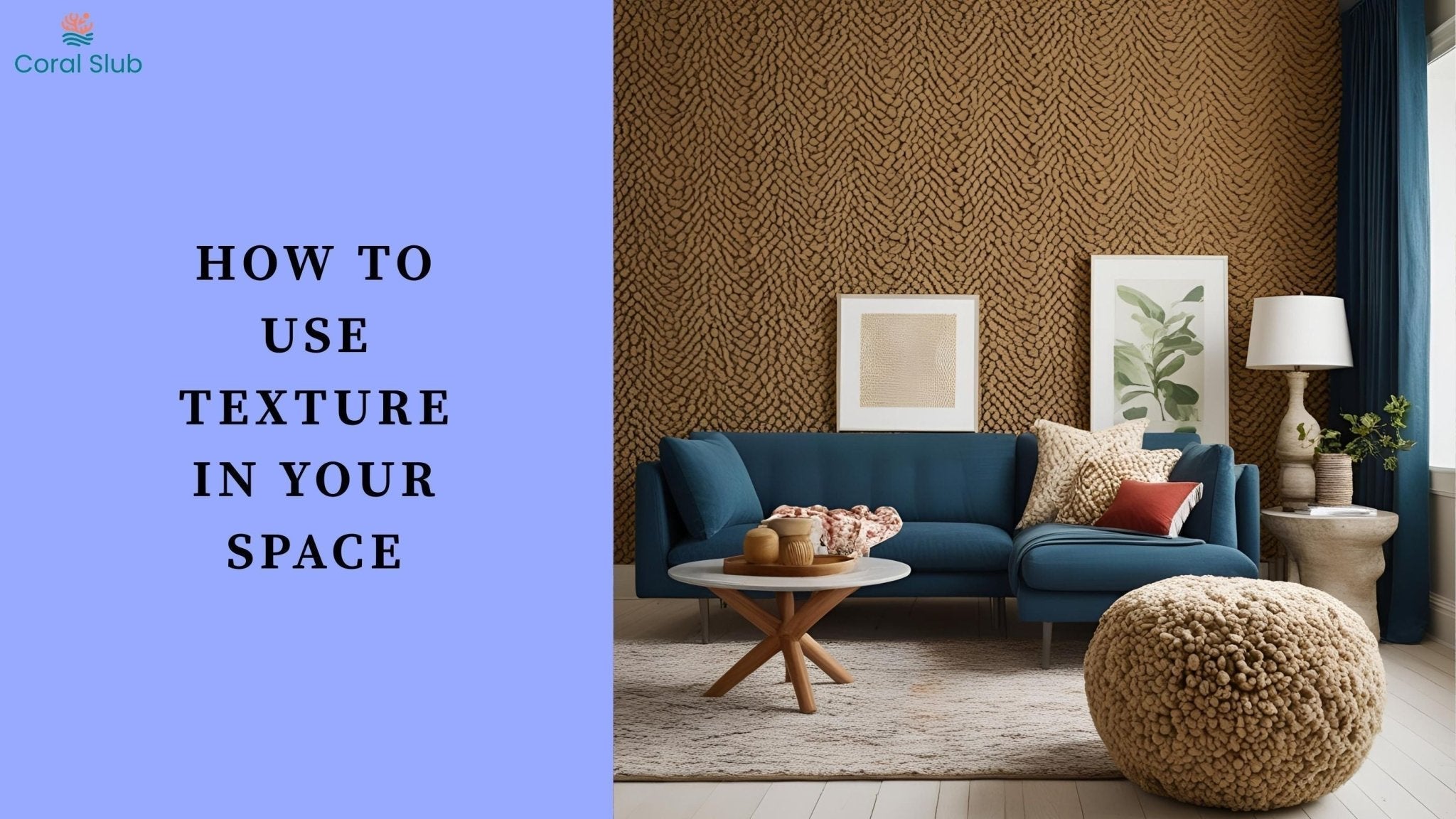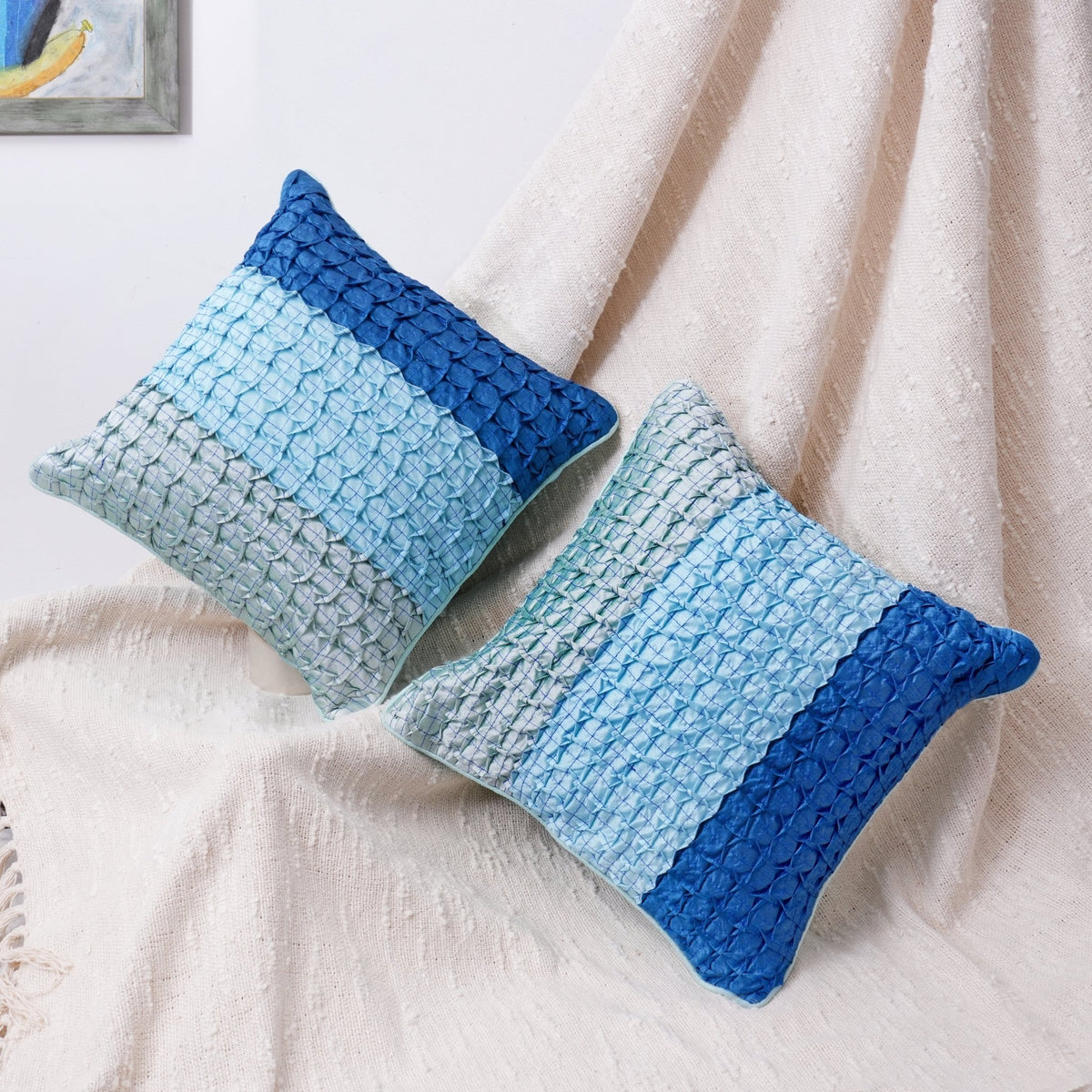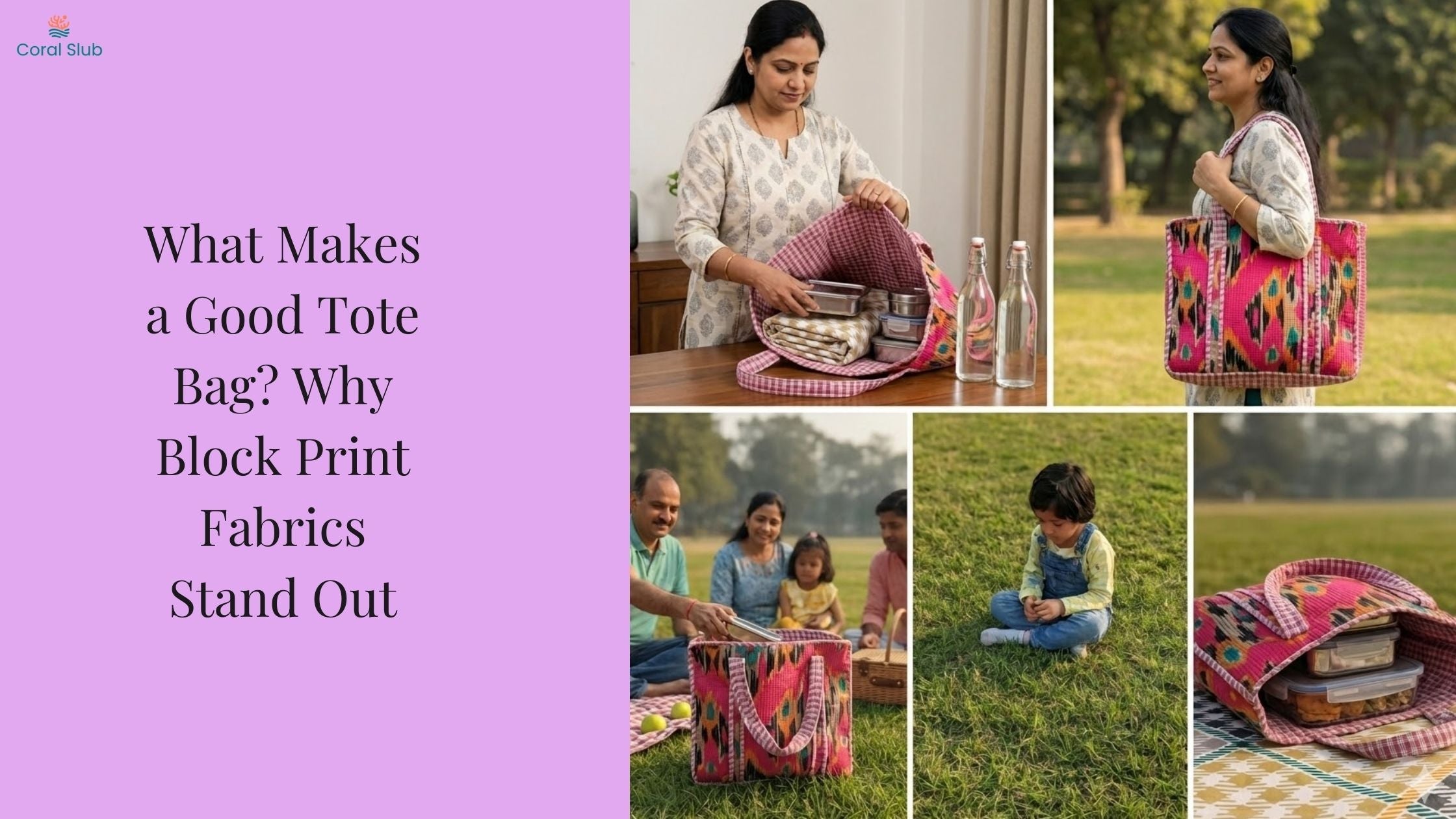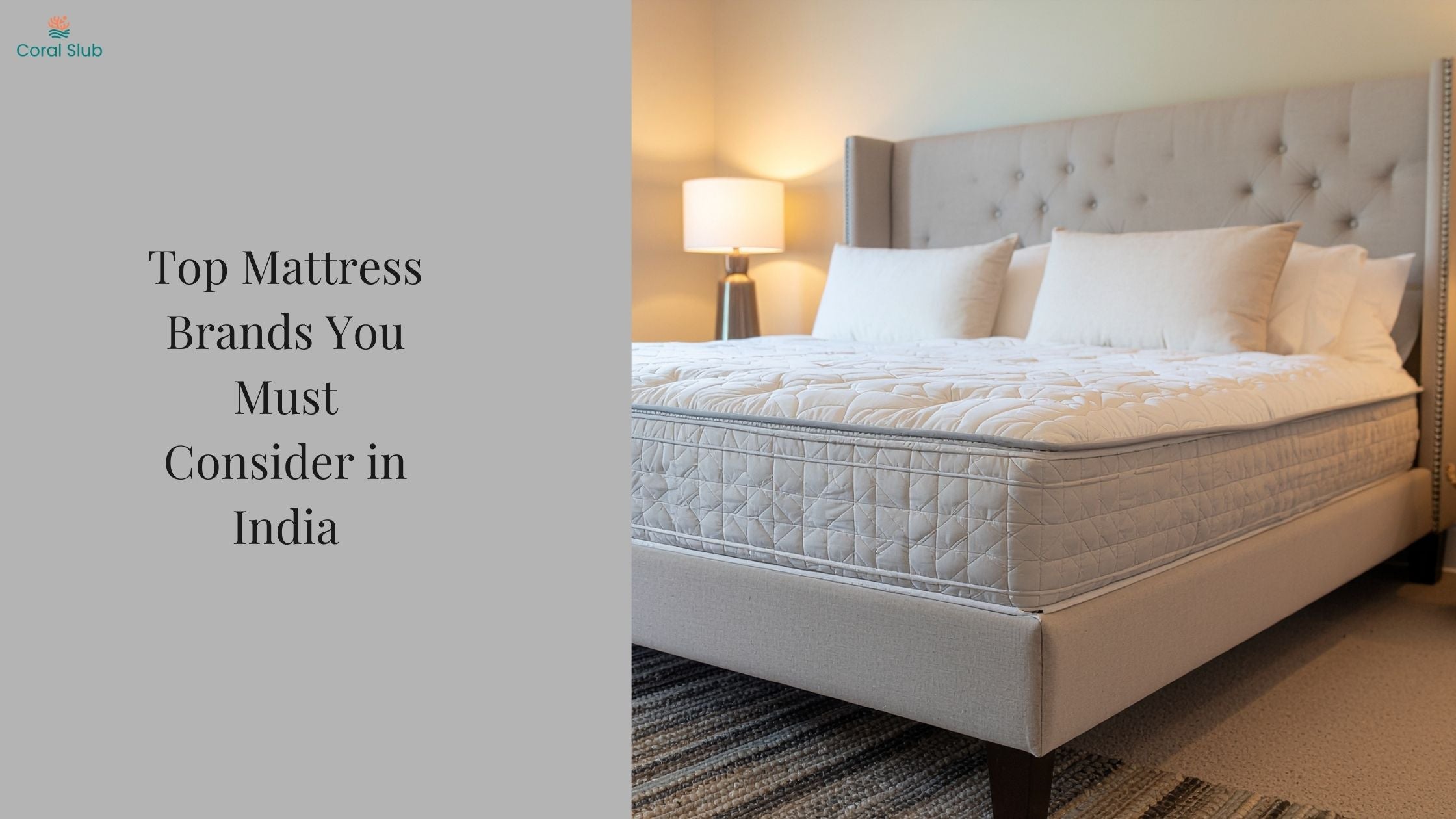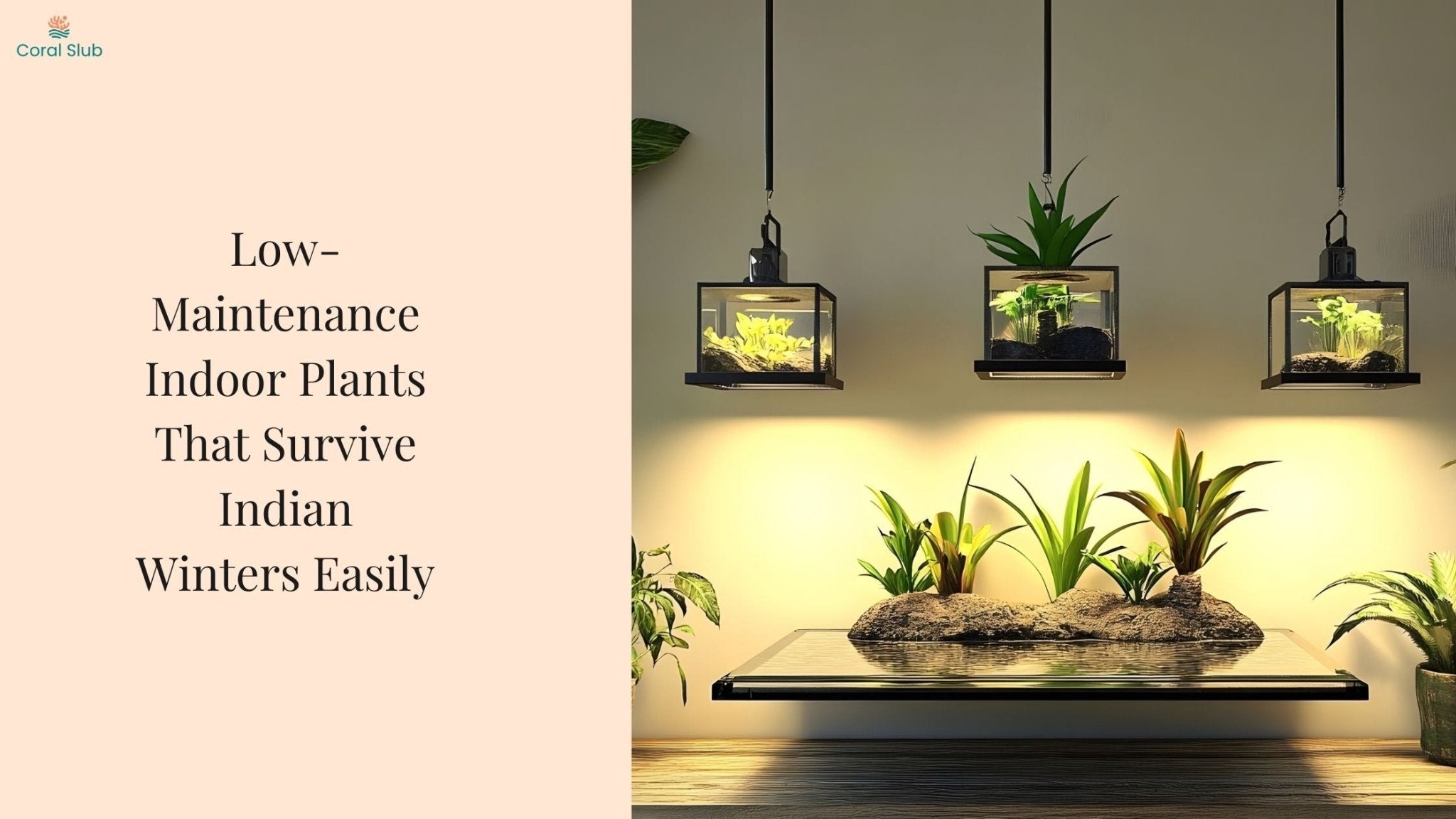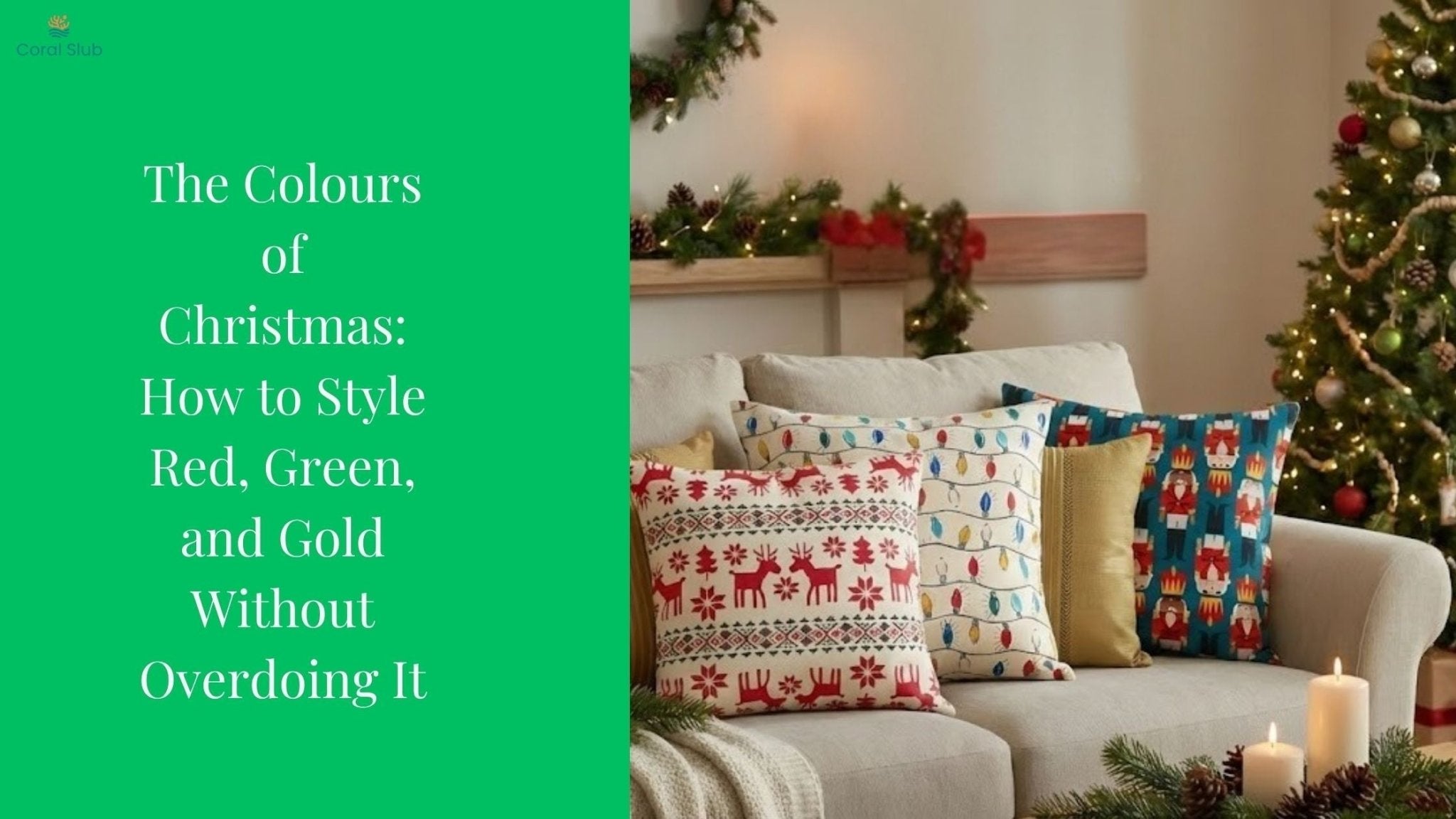In the world of interior design, color and pattern often steal the spotlight. Yet it's texture,the tactile quality that engages our sense of touch that can transform an ordinary room into an extraordinary experience. At Coral Slub, we believe texture is the secret ingredient that elevates spaces from merely looking good to feeling undeniably right. This comprehensive guide will explore how thoughtful texture combinations can create depth, interest, and comfort in any room of your home.
Why Texture Matters in Interior Design

Texture is the element of design you can quite literally feel. It adds dimension to spaces that might otherwise fall flat, creating visual weight and interest even within monochromatic color schemes. When we touch different surfaces the smooth coolness of marble, the soft give of a plush throw, the natural irregularity of linen,our brains receive signals that evoke emotional responses.
These textural experiences create the sensory richness that makes a space feel complete. A room lacking textural variety often feels sterile or unfinished, regardless of how carefully the colors and furniture have been selected. Conversely, spaces with thoughtfully layered textures feel intentional, lived-in, and welcoming precisely the feeling most of us want to cultivate in our homes.
The Psychology of Texture in Living Spaces

Texture speaks to our primitive brains in ways few other design elements can. Rough textures like exposed brick or raw wood beams create feelings of groundedness and authenticity. Smooth textures like polished marble or glass convey refinement and modernity. Soft textures signal comfort and safety, inviting us to relax and linger.
This psychological impact explains why texture selection should be strategic rather than arbitrary. The textures you introduce should align with how you want each space to feel and function. A home office might benefit from the authoritative texture of leather and the organic irregularity of handmade paper, while a bedroom calls for the gentle embrace of our Coral Slub bedsheets , with their distinctive soft yet substantial feel that signals to your body it's time to rest.
Creating Balance: The Rule of Three Textures
Professional designers often follow the "rule of three" when incorporating texture, each room should include at least three distinctly different textural elements to create visual interest without overwhelming the senses. This might mean combining:
-
Smooth textures like satin pillows, polished wood, or glass tabletops
-
Rough textures such as jute rugs, rattan furniture, or stone accents
-
Soft textures including velvet upholstery, cashmere throws, or our signature Coral Slub bedding
The key is creating contrast between these elements while maintaining harmony in the overall design. Too many competing textures can make a space feel chaotic, while too few create flatness. This balancing act becomes intuitive with practice, particularly when you focus on how different combinations make you feel when experiencing the space.
Layering Textures Through Textiles

Textiles offer the simplest entry point into textural design. In bedrooms, where comfort reigns supreme, our approach at Coral Slub has always been to create thoughtful texture combinations through layers. Start with our breathable cotton sheets as your foundation, add a textured quilt or coverlet for dimension, then complete the composition with accent pillows in complementary materials.
The beauty of textile textures lies in their adaptability,they can be seasonally rotated or quickly changed to refresh your space. Heavier, more substantial textures like cable-knit throws and velvet cushions create warmth in winter months, while airier textures like our linen-blend sheets and lightweight cotton coverlets bring breathable comfort in summer.
Incorporating Architectural Textures

Beyond movable elements, consider the fixed textural components of your space. Architectural textures,like exposed brick walls, shiplap paneling, coffered ceilings, or textured wall treatments create permanent textural interest that anchors a room's sensory experience.
If structural changes aren't possible, textured wallpaper, specially formulated paint techniques, or applied materials like wood panels can introduce architectural texture without major renovation. These elements provide a consistent textural backdrop against which other design choices can play.
Practical Tips for Incorporating Texture

As you begin exploring texture in your own spaces, consider these practical approaches:
-
Start with a neutral base. Texture shines most brilliantly against simple backgrounds that allow it to be appreciated without distraction.
-
Consider contrast. Place smooth elements against rough ones, soft against hard, matte against glossy to maximize textural impact.
-
Think beyond the visual. Close your eyes and touch different elements in your space. The sensations should be varied and intentional.
-
Layer strategically. Build texture from the ground up flooring, furniture, textiles, and accessories should create a coherent textural journey.
-
Respect function. Highly textured surfaces collect dust and can be challenging to clean, so reserve them for areas where maintenance won't become burdensome.
Conclusion:
In today's increasingly digital world, our physical environments play a critical role in sensory nourishment. Thoughtfully textured spaces reconnect us with the material world, offering tactile experiences that ground and center us. By applying the principles we've explored balance, contrast, layering, and authenticity, you can create rooms that satisfy not just visually but haptically.
At Coral Slub, we believe your home should be a feast for all senses. Our textiles are designed to contribute to this holistic experience, providing the foundation for spaces that don't merely look beautiful in photographs but feel undeniably right in everyday life. Because ultimately, texture isn't just about what we see,it's about how our spaces make us feel.
We invite you to explore our collections, each designed with textural experience at the forefront, and discover how the right foundations can transform your space into a sensory sanctuary that welcomes, comforts, and inspires every day.

